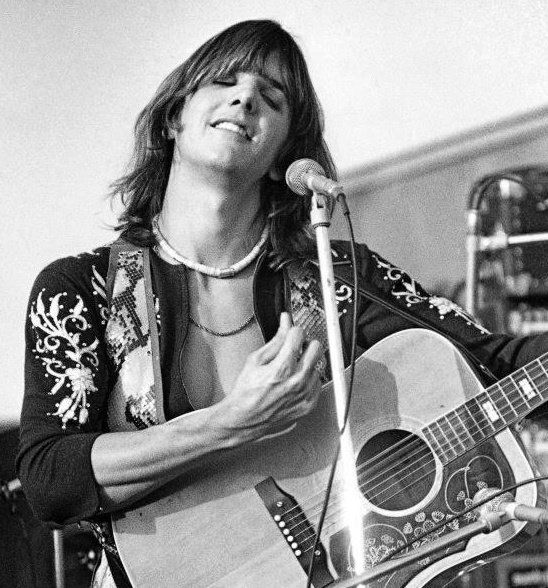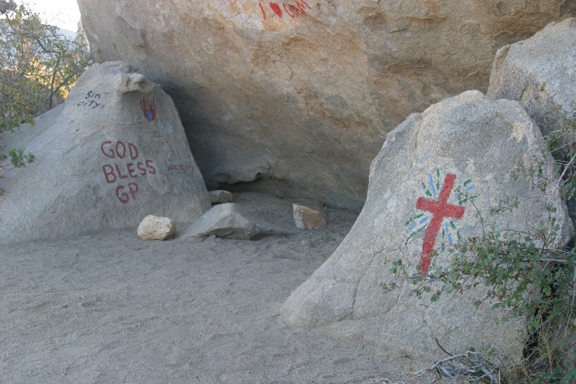Before The Eagles and the Doobie Brothers made country-flavored rock cool, there was Gram Parsons (1946-1973). Credited with cutting the first-ever country-rock album, “Safe at Home,” Parsons played with The Byrds when they became the first “long-hair hippie” band to play the Grand Ole Opry in 1968. Although increasingly hooked on drugs and booze, Parsons later founded the Flying Burrito Brothers and introduced his rockin’ country style to other artists like the Rolling Stones’ Keith Richards before going solo.
 At the height of his career, Parsons discovered the Joshua Tree National Park, a surreal desert landscape 100 miles east of Los Angeles where he’d wander for days in a hallucinogenic haze, searching for enlightenment and UFOs. One night, he told his road manager and friend Phil Kaufman that when he died, he wanted to be cremated and his ashes sprinkled over the Cap Rock outcropping in the park.
At the height of his career, Parsons discovered the Joshua Tree National Park, a surreal desert landscape 100 miles east of Los Angeles where he’d wander for days in a hallucinogenic haze, searching for enlightenment and UFOs. One night, he told his road manager and friend Phil Kaufman that when he died, he wanted to be cremated and his ashes sprinkled over the Cap Rock outcropping in the park.
Shortly before starting a tour with Emmylou Harris in 1973, Parsons returned to Joshua Tree with Kaufman and other friends for another lost weekend. He overdosed on alcohol and morphine in Room 8 of the funky Joshua Tree Inn (61259 Twentynine Palms Highway in Joshua Tree, or GPS 34.134556, -116.326793). A few days later, the casket containing his body was about to be flown to Louisiana for burial when Kaufman and a friend hijacked the casket in a “borrowed” hearse. They sped out to Joshua Tree, where they dragged the casket in the dark to a secluded spot under Cap Rock, doused it with a gallon of gasoline and set it afire.
Pursuing deputies eventually caught Kaufman, who was charged with stealing a coffin and fined $750. Thirty-five pounds of Parsons’ charred remains were buried in Metairie, Louisiana.
The cremation site is a remote spot in Joshua Tree National Monument, at GPS 33.99048, -116.16348. (When I interviewed Kaufman a couple years ago about the precise spot, he admitted he wasn’t sure. “It was very drunk out that night,” he told me.)
For many years, the exact spot in Joshua Tree was marked by a slab painted with the words “Safe at Home,” but the slab was eventually removed by the Park Service and is now in the courtyard at the Joshua Tree Inn. Fans still leave coins, flowers and messages at the original cremation spot, which is on the western side of Cap Rock. It sits beneath a large face known to rock climbers as the “Gram Parsons Memorial Hand Traverse.”
Parsons’ death and cremation are described in the 2005 book Grievous Angel: An Intimate Biography of Gram Parsons, by Jessica Hundley, and in the highly fictionalized 2003 film Grand Theft Parsons, starring Jackass’ Johnny Knoxville as Phil Kaufman.
Excerpted from THE CRIME BUFF’S GUIDE™ TO OUTLAW LOS ANGELES (2017, WildBlue Press)

